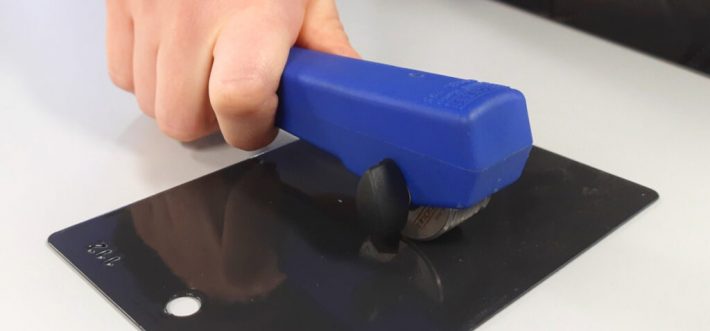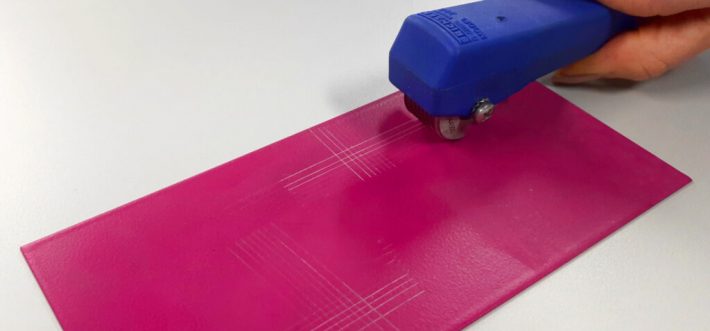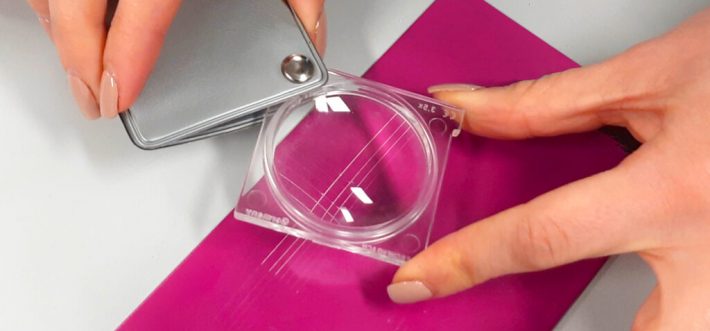The adherence test is a very effective test to check the firmness and adhesion of existing coat. It is very useful to avoid starting to coat a surface with poor adhesion, and to avoid having to redo a job because it was not carefully assessed at the outset.
Carrying out tests, sampling and checks before undertaking any work related to the coating of metal and plastic are essential to understand the potential outcome, so as to be able to propose the best possible solution and always knowing precisely what to expect from a specific type of treatment.
We must always remember that coating is not always and only an aesthetic parameter, it is often also an important factor against corrosion, oxidation and the action of other external agents that could limit the life cycle of an artefact, such as water and the sun.

In this case, it is important to find out whether the coating is adhering perfectly to the surface or whether problems may arise, even if at first glance everything seems to be in order.
A very effective test to check the firmness and adhesion of the existing coating is to make several cuts in the surface a couple of millimetres apart. These incisions should be deep enough to touch the surface underneath the layer of coat directly.
With the aid of a crosshatch tester or adhesion tester, a grid must be formed by a series of horizontal and vertical cuts, forming squares of 1x1mm, 2x2mm or 3x3mm.
After making the incisions, it is sufficient to place Permacel or 3M adhesive tape (specifically designed for cross-hatching tests) over the area concerned. If, when removing the tape, some of the coat remains attached to the adhesive, it means that the adhesion is poor and, therefore, applying a further coat of paint over it could certainly cause the coat to peel off.
This test, known as the squareness or adhesion test, is a quick and easy way of assessing the adhesion of coatinf; it is very useful in order to avoid starting to coat a surface that has poor adhesion and will avoid having to redo a job because it was not carefully assessed at the outset.

If the resulting mesh is completely flat, with perfectly clear line edges, then the coating is suitable and a further coat can be applied on top of the current one if required (this is the case with ISO 0). If, on the other hand, the edges of the lines are not clean, but there are coat detachments at the corners or along the various lines, it means that the treatment is not perfectly adherent to the surface.
In this case, it will be necessary to evaluate the level of seriousness of the situation, with an ISO value that can go from 1 to 5, where 1 represents small detachments from the intersections of the lines (equal to no more than 5% of the tested area) and 5 represents a level of detachment greater than 65% of the area, a situation that is absolutely not compatible with a need for coating and that will require total scrapping of the current surface before it can be worked on further.
The reference standard that regulates this test is ISO 2409:2020, where the test method is clearly defined, with indications detailing how to carry out the test in a suitable manner.
Our in-house laboratory is fully capable of performing the test, with experienced technicians who can carry it out in a short space of time and safely reveal the result.
The cross-hatching test is one of the simplest and most practical methods of understanding whether the adhesion of a coating is optimal or not, on both metal and plastic substrates, and for this reason, its use is strongly recommended.

Would you like to receive more information? Write us by filling out the form below:

